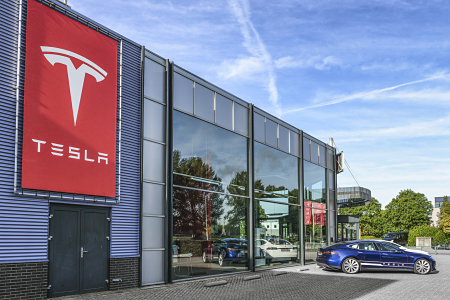Tesla founder envisions electric trucks
Tesla founder Elon Musk’s latest master plan includes an electric semi-truck, which he sees as a major development in cutting down on vehicle emissions.
Musk isn’t the only one thinking about an electric solution to the emissions dilemma.
Siemens is developing an overhead catenary system near the ports in Los Angeles to test the feasibility of electric trucks moving goods in and out of the ports.
Former Tesla executive Ian Wright created Wrightspeed, which developed a new form of hybrid powertrain that uses a small gas turbine to recharge batteries.
Wrightspeed recently inked a deal to re-power a fleet of diesel buses in New Zealand.
Nikola Motors says it is developing the Nikola One electric truck with 2,000 horsepower and a 1,200-mile range. The company says it has 7,000 pre-orders worth a total of $2.3 billion, but no factory, battery factory and evident corporate infrastructure.
Tesla’s Musk has a clear vision of where he wants to go with an electric truck.
“In addition to consumer vehicles, there are two other types of electric vehicle needed: heavy-duty trucks and high passenger-density urban transport,” Musk writes in his master plan. “Both are in the early stages of development at Tesla and should be ready for unveiling next year. We believe the Tesla Semi will deliver a substantial reduction in the cost of cargo transport, while increasing safety and making it really fun to operate.”
In addition to developing a semi-truck, Musk is convinced that autonomous vehicles will be the norm in the future.
“As the technology matures, all Tesla vehicles will have the hardware necessary to be fully self-driving with fail-operational capability, meaning that any given system in the car could break and your car will still drive itself safely. It is important to emphasize that refinement and validation of the software will take much longer than putting in place the cameras, radar, sonar and computing hardware,” wrote Musk.
“Even once the software is highly refined and far better than the average human driver, there will still be a significant time gap, varying widely by jurisdiction, before true self-driving is approved by regulators. We expect that worldwide regulatory approval will require something on the order of six billion miles (10 billion km). Current fleet learning is happening at just over three million miles (5 million km) per day,” he said.
“I should add a note here to explain why Tesla is deploying partial autonomy now, rather than waiting until some point in the future. The most important reason is that, when used correctly, it is already significantly safer than a person driving by themselves and it would therefore be morally reprehensible to delay release simply for fear of bad press or some mercantile calculation of legal liability,” he added.
Tesla will have its work cut out for it – facing automotive giant Mercedes Benz, which this summer announced its eTruck.
The Mercedes-Benz Urban eTruck has an electrically driven rear axle and is powered by three lithium-ion battery modules. The zero-emission vehicle has an admissible total weight of up to 26 tons with a range of 200 kilometers (124 miles).
“In the future, it will be necessary to transport goods in urban environments for increasing numbers of people—and with the lowest possible emissions and noise,” said Wolfgang Bernhard, the CEO of Daimler Trucks and Buses. “By now large cities such as London or Paris are considering a ban on internal combustion engines in city centers in the future. That means: there will be fully electric trucks ensuring the supply of humans with food or other goods of daily needs.”
Daimler said their eTruck will be ready for the market by the beginning of the next decade. At that point, Daimler believes battery technology will be vastly improved and estimated that the cost of batteries will lowered by a factor of 2.5.
“We push the boundaries of what is technically feasible, very widely to the front,” said Bernhard.






